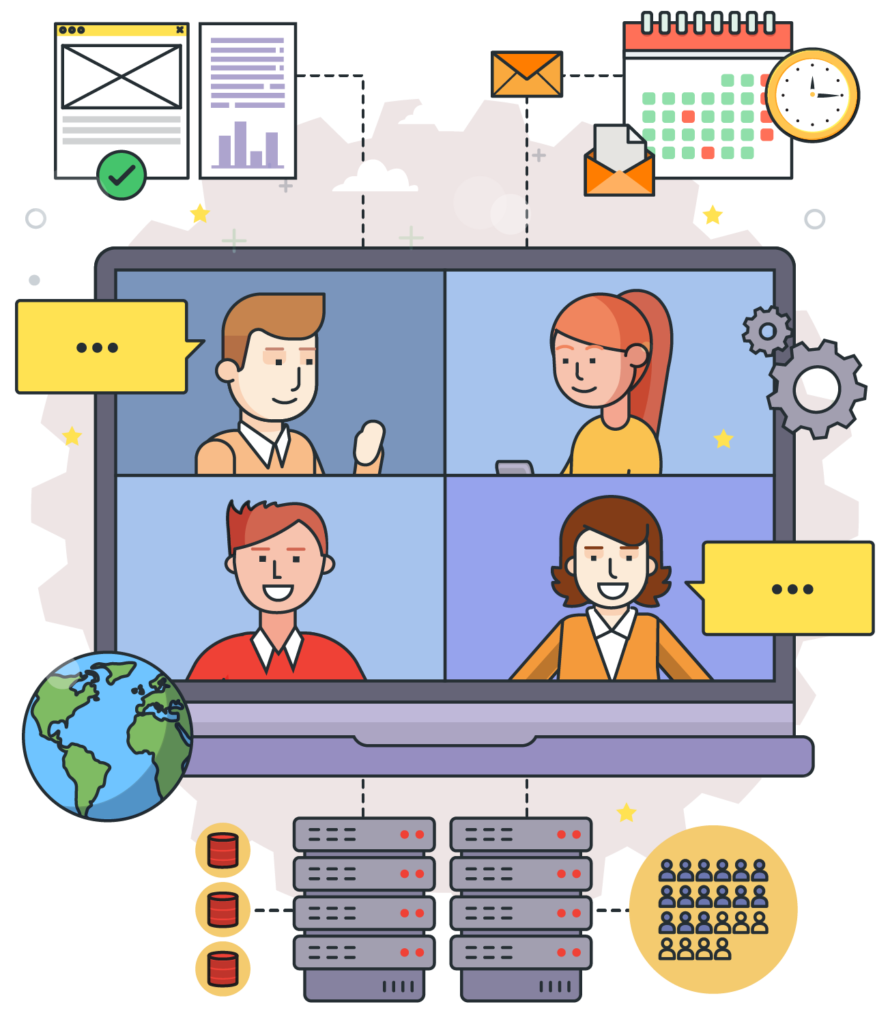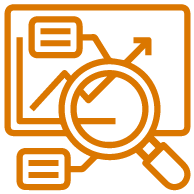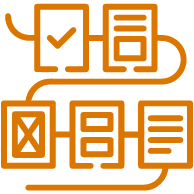
PROJECT MANAGEMENT
We firmly believe having solid processes and procedures in place guarantee a smooth development cycle and ensure timely delivery of work.
That is why our Project Management team has been properly trained according to Project Management Institute (PMI) standards. Each client has their own set of procedures and methods, which is why we always strive to integrate our internal methods with those of our clients.
How do we engage our clients?
Client engagement is a crucial first step in a successful partnership. Our approach is hands-on. E-mails are not enough. If physical meetings are impossible, then we aim to get as close to “face to face” as we can with phone calls and video conferencing, as frequently as schedules permit. When working with a client to understand their vision, we’ve found a style guide alone doesn’t cut it: we need to have a sense of the organization’s mission. This can often be ascertained via online research, but the best way is to hear it from those who are directly involved.
Meetings are requested with the client’s Project Manager (PM), or whomever is responsible for the project, as well as any stakeholders the client feels would be necessary contributors to the creative process. The objective of any initial meeting is to define project expectations, including look and feel, roles and responsibilities and timelines. Subsequent meetings clarify any questions, concerns and issues that cannot be resolved easily via e-mail and/or chat. This procedure is present in the production process both internally and externally.
The engagement process can last approximately seven to ten working days, depending on the complexity of the project and the number of stakeholders involved.
How do we manage projects and ensure quality?

STEP 1
After a project request has been received and if we are already in possession of a style guide, wireframe, and/or storyboard, then an initial meeting is called with the client’s PM and ours (as well as any other vested stakeholders the client deems crucial to the creative process) in an effort to: a) provide introductions; b) clarify any doubts regarding the documentation provided; c) obtain any missing documentation necessary to realize the project. This is the stage in which everyone needs to be on the same page regarding project requirements. Internally, Activica’s Project Manager and the directors of each area involved in a project, will meet to discuss what resources will be necessary to realize the project. The planning phase is when the following should be determined (in conjunction with the client):
- The stages of design and development
- The revision, verification and validation appropriate for each stage of design and development. This step and the last generate a timeline, which can be altered as the result of any changes or modifications requested by the client.
- Those responsible for design and development and points of contact on all sides. The planning phase is also when all in and out of scope activities should be determined.

STEP 2
Usually the following steps may be necessary:
- Analysis of requirements should make reference to the tasks that will need to be completed (start and end dates, any additional training that will be required of personnel, etc.)
- Organization of resources involved and if there is any need to subcontract
- Analysis of potential issues/risks that may arise during the design and/or development phase
- Identification of standards, norms, and tools that may be necessary

STEP 3
All projects must start with a document clearly defining the following:
- Functional and development requirements
- Any legal requirements that may be applicable
- Information regarding any previous designs that are similar to new project
- In and out of scope tasks
- Any other essential requirements
This information must be reviewed with the client to ensure there are no:
- Ambiguities nor contradictions
- Inconsistent, impractical or inapplicable information
- Requirements that can’t be validated
- Requirements that are assumed or not established
- Imprecise descriptions regarding design and development
- Design or development decisions that lack documentation.

STEP 4
All project documentation and production will be saved in Activica’s project server, which additionally registers:
- All modifications to a project
- Those responsible for the modifications
- When the modifications were completed
- An associated brief description.

STEP 5
Prior to any delivery, the final product goes through rigorous internal quality assurance (QA) by the Senior Art Director, the Project Manager, and our QA-specific resources to ensure consistency with the initial project requirements.

STEP 6
The client then reviews the delivery. Any necessary changes are incorporated.
How do we manage timelines?
Our project managers use project management tools and methodologies, such as Trello boards, Gantt charts and others, to prepare detailed task plans both for the client and for the vendor, in any given project. This gives all parties a clear sense of what should be complete at any given point in time, and ensures predictability of project progress.
The typical steps we follow to prepare a GANNT chart are:
We…
- write a project scope statement.
- breate a work breakdown structure (WBS)
- break each work package into tasks.
- determine project dependencies.
- determine the total time needed for each task.
- identify resource availability.
- identify important milestones.
Once all tasks, interdependencies, and milestones are plotted on a Gantt chart, we establish weekly or daily meetings (as needed) to evaluate progress and constantly compare with where we should be according to the Gantt chart. Given the complete transparency of this approach, if any deviation is made to the original timeframes, then it is always with the prior knowledge and sign-off of all parties.